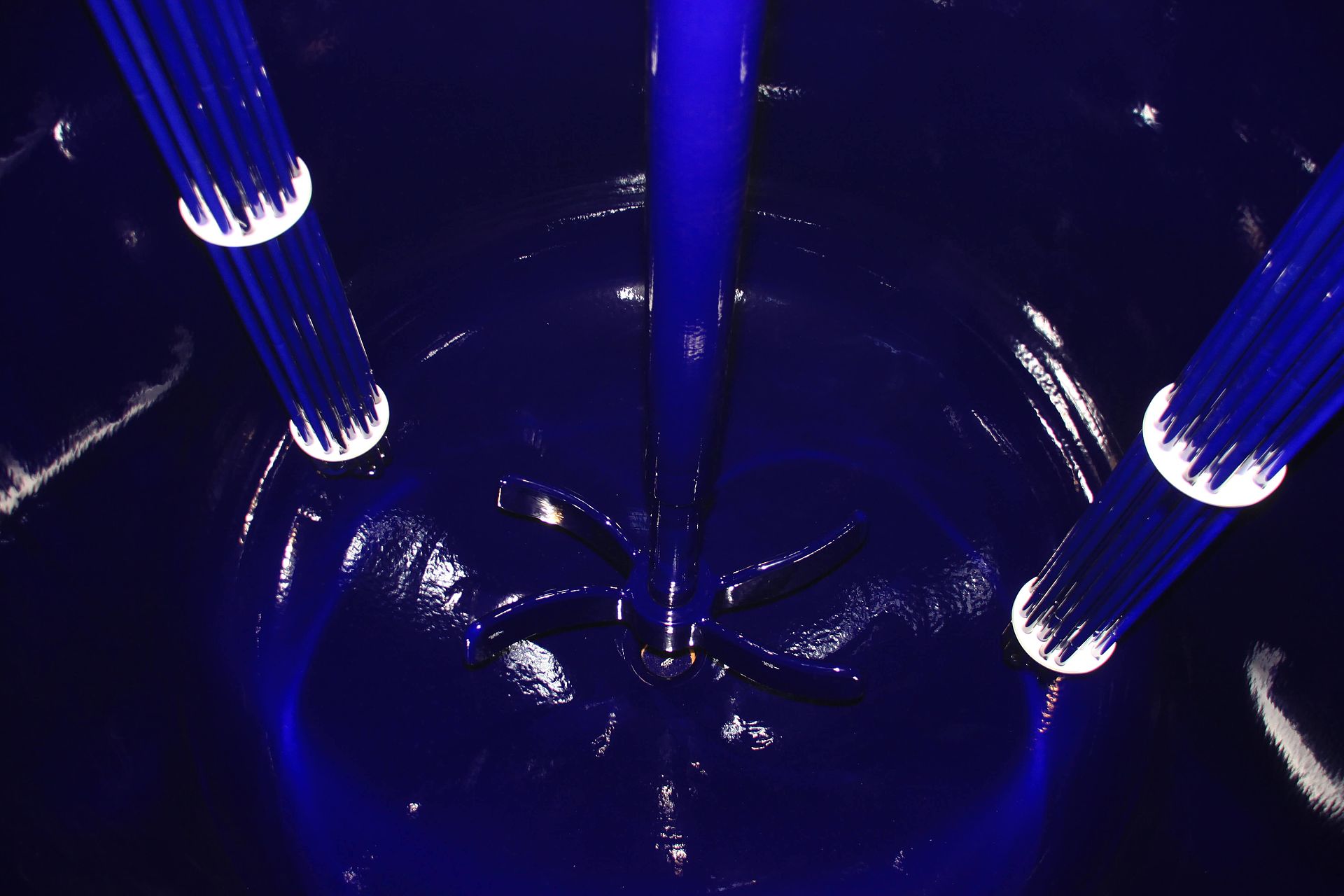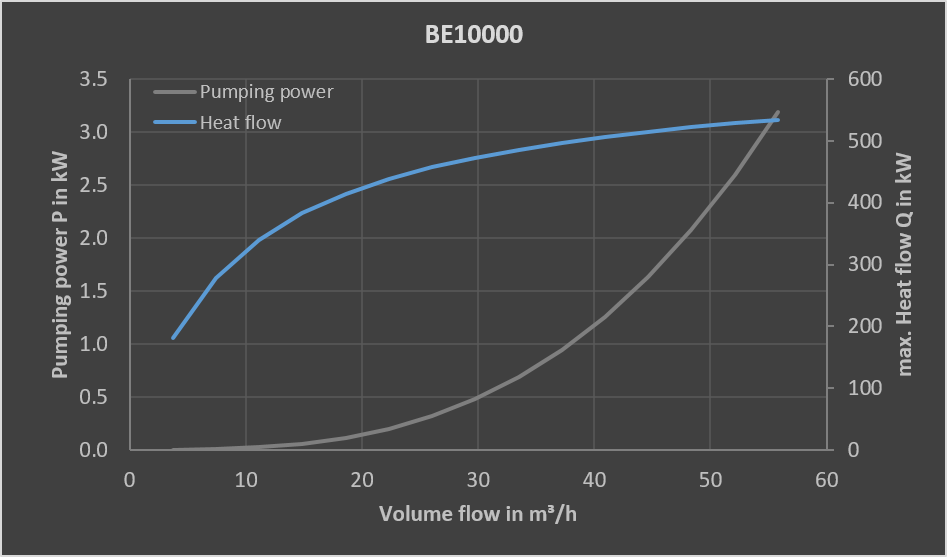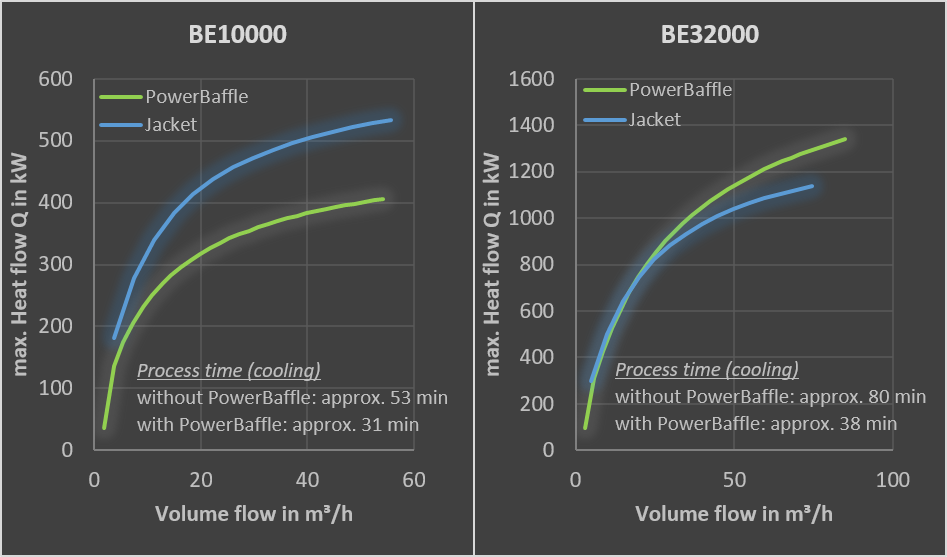Economical operation mode of a reactor with a PowerBaffle
Introduction
Rising energy prices as well as political guidelines and regulations justifiably encourage companies to assume social responsibility.
In addition to the German energy policy or the hydrogen strategy, the EU is also massively driving forward the economic transformation via the Green Deal [1]. Energy-intensive sectors in particular, such as the chemical and energy industries, represent decisive levers for reducing energy consumption. Small improvements in efficiency save large amounts of energy. As explained in other newsletters, glass-lined reactors require large amounts of energy both in production and operation.
High operating costs and ecological impacts via emissions during power generation are the consequences. To counteract this, THALETEC offers calculation options for identifying and quantifying potential savings in operating costs.
Glass-lined reactors are used in the chemical and pharmaceutical industries, to implement complex processes with aggressive media. A decisive influencing factor here is the product temperature, which can be adjusted via various heat flows. Reaction heat must be dissipated with sufficient safety or the product must be tempered (cooled/heated) in order to activate or support chemical processes. Glass-lined reactors from THALETEC offer a wide range of options for providing the necessary heat flows. In addition to a jacket or a half-pipe coil, each of which can be additionally divided into different heating or cooling zones, THALETEC is the only manufacturer in the world to offer the option of glass-lined tube bundle heat exchangers (PowerBaffle K014) for significantly increasing the heat exchange surface within a reactor. A PowerBaffle includes the functions of a heat exchanger, baffle and temperature sensor.
PowerBaffle – more performance and shorter process times
In general, glass-lined reactors are tempered via a jacket or a half-pipe coil. The heat exchange surface is thus predetermined and limited by the size of the reactor. If cooling or heating processes are to be carried out more quickly or with greater safety, the heat exchange surface must be increased. If the product properties in the reactor are assumed to be fixed, a variation of the heat flow is only possible via the influencing variables of the service side. Essential parameters are the input temperature, the material data and the volume flow of the service media, but also the speed of the agitator system. However, the achievable heat flow follows a root function, so that an increase in the parameters only results in a slight improvement in the heat flow (Figure 1). A significant increase in heat flow can be achieved by increasing the heat exchange surface. Glass-lined tube bundle heat exchangers - PowerBaffle K014 - represent a unique system for significantly increasing the heat exchange surface. These not only significantly increase the heat exchange surface and thus the heat flow, but also make it available at low operating costs!
Pumping power and Heat flow of service media
Besides tempering of the service media, it must be pumped through a jacket or a half-pipe coil or a PowerBaffle, depending on the equipment of the reactor. This results in various pressure drops and associated pumping powers, which are reflected in the operating costs (Figure 2).
It becomes clear that the operation of a PowerBaffle is the most cost-effective, as it generates only a small pressure drop. This is logically understandable, as the service media is only pumped through two nozzles and several pipes connected in parallel. In contrast, a jacket generates greater pressure drops at the agitating nozzles (flow nozzles). Pressure losses in a half-pipe coil are caused by the spiral structure, which generates a secondary flow in the form of a double vortex as a result of the centrifugal forces. The required pumping power is related to the operating costs and CO2 emissions depending on the operating hours. A PowerBaffle thus provides the heat flow in an economic and ecologic way!
Furthermore, depending on the conditions, a PowerBaffle has a heat transfer coefficient that is 2.5 to 3 times higher than that of a glass-lined vessel. Consequently, the surface of a PowerBaffle represents a particularly high-quality heat exchange surface in terms of heat flow! This is due to the glass-lining technology using the PUESTA process (powder electrostatic process), which has the same corrosion resistance as standard glass-lines (vessel, turbines, baffles) - but a smaller layer thickness is sufficient. Consequently, the heat transfer is significantly increased by the smaller layer thickness of the glass-lined tubes compared to the glass-lined vessel. Due to the surface ratios between the reactor wall and the PowerBaffle, from a certain reactor size (depending on conditions from approx. BE25000 or BE32000) even a greater heat flow can be transferred via a PowerBaffle than via the jacket/half pipe coil (Figure 3)!
Tube bundle heat exchangers for further applications
In addition to the integration of one or more PowerBaffles in one reactor, general glass-lined tube bundle heat exchangers (optionally also with SiC tube bundles) as a separate apparatus in a chemical plant offer further possibilities for transferring heat flows in a chemical plant. These can be used for heating, cooling, evaporation, condensation or as condensate cooling (K014). In addition, the glass-lined tube itself is offered as an independent product (PowerTubes K119), which are used, among other things, in heat exchangers of power plants or generally as thermal flue gas cleaning (e.g. flue gas desulphurisation, separation/condensation of aggressive media).
THALETEC offers you the calculation and assessment of the listed aspects for a PowerBaffle (process(at)thaletec.com).
References
[1] E. Kommission, „Der europäische Grüne Deal,“ Amtsblatt der Europäischen Union, Brüssel, 12/2019.







